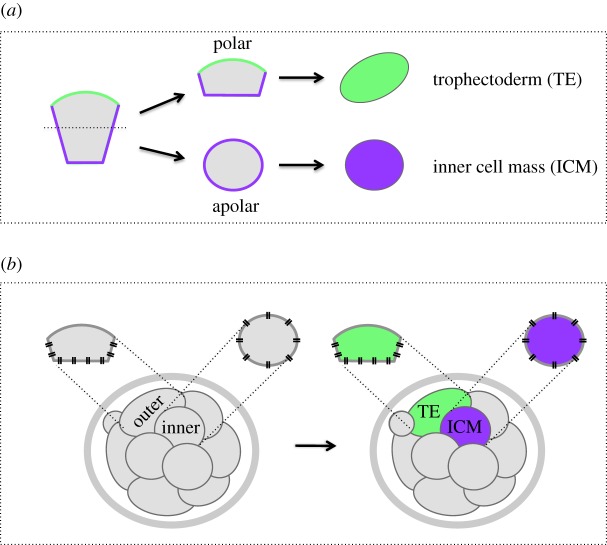Figure 2.
The classical ‘polarity’ and ‘positional’ models proposed to explain the first cell-fate decision. (a) A schematic representation of the ‘polarity’ model showing that the differences required to set the trophectoderm (TE) and the ICM cell lineages apart arise as a result of an asymmetric partitioning of polarized subcellular components between daughter cells (e.g. differential inheritance of apical and basolateral membrane domains) upon asymmetric cell division; solid green and purple lines, respectively, mark the apical and basolateral membrane domains, while the dashed black line marks the cell cleavage plane. (b) A schematic representation of the ‘positional’ model showing that the differences required for the segregation of the TE and the ICM cell lineages originate in the differential extent of cell-to-cell contact between individual blastomeres, corresponding to their relative position in the embryo; the sites of the cell-to-cell contact are highlighted with two parallel black lines, reminiscent of adherens junctions.

